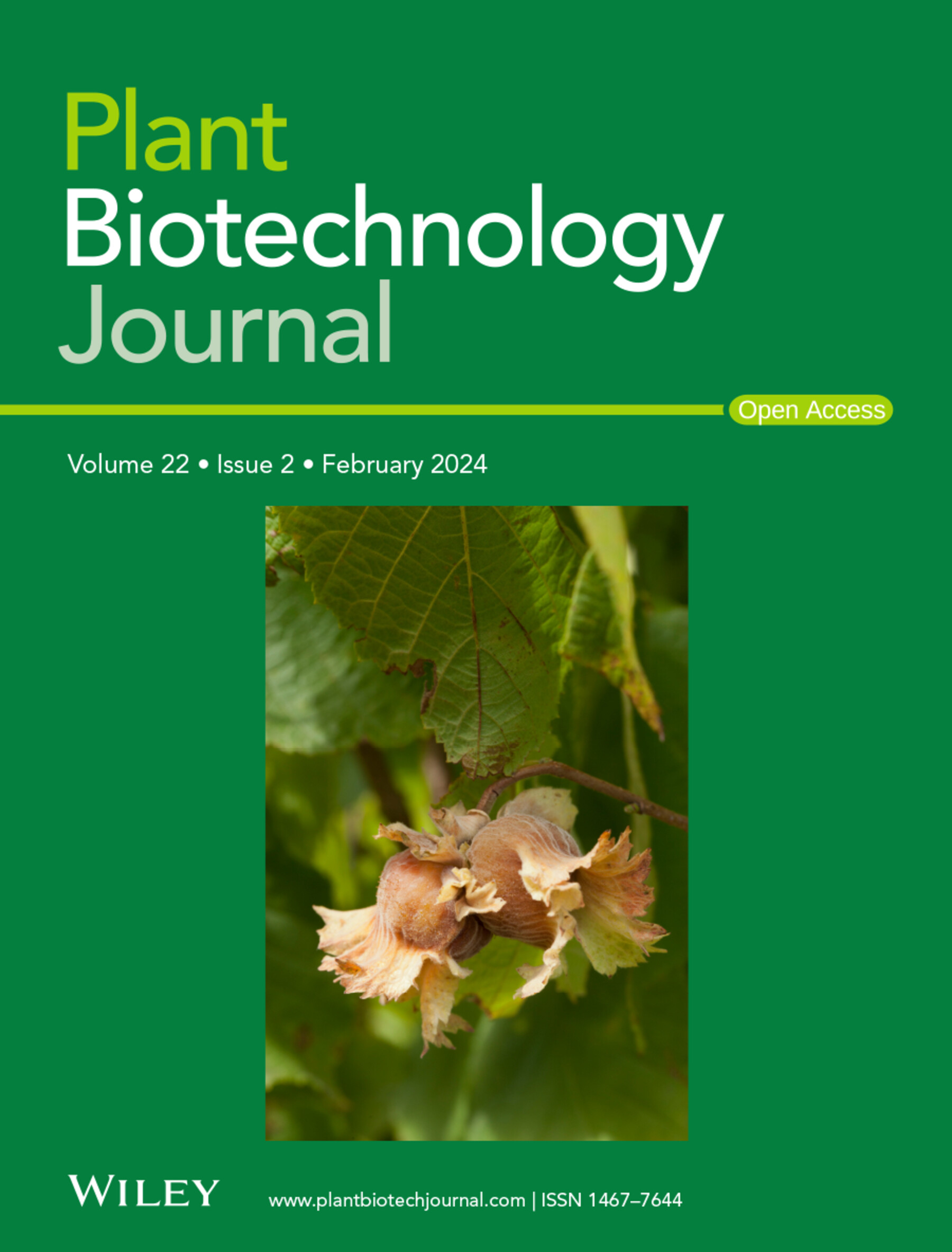The Ste20 Homologue FvM4K1 Regulates Organ Size via Hippo Signalling Pathway in Woodland Strawberry (Fragaria vesca).
IF 10.5
1区 生物学
Q1 BIOTECHNOLOGY & APPLIED MICROBIOLOGY
引用次数: 0
Abstract
Strawberry fruit size is critical for its marketability. However, organ size control is a complex process regulated by various signalling pathways. In animals, the Hippo signalling pathway acts as a negative regulator of organ size, with Ste20 kinase being a key component. Mutation in Ste20 causes excessive cell proliferation and enlarged organs. In this study, FvM4K1, a Ste20-like kinase from woodland strawberry (Fragaria vesca), is identified. FvM4K1 partially restores defects in a yeast Ste20 mutant ste20Δ and fully rescues growth in Arabidopsis mutant atsik1-4 lacking its Ste20 homologue, AtSIK1, underscoring its functional conservation. Downregulation of FvM4K1 by RNAi in woodland strawberry leads to smaller plants and fruits resulting from reduced cell size and number, while overexpression increases organ size, indicating a positive role in organ size control which contrasts with the negative role of Ste20 in other organisms. FvM4K1 autophosphorylates, with Lys269 and Thr396 being critical for its function. FvM4K1 interacts with FvMOB1A and FvMOB1B, components of the Hippo signalling pathway, and phosphorylates them at Thr35 and Thr36, respectively. These findings provide novel insights into the mechanisms underlying fruit and organ size control in woodland strawberry and contribute to our understanding of the Hippo signalling pathway in higher plants, a pathway that remains largely unexplored. It also opens new avenues for exploring the regulatory function of the Hippo pathway in plant development and potentially informs biotechnological strategies for crop improvement.Ste20同源物FvM4K1通过Hippo信号通路调节林地草莓(Fragaria vesca)器官大小。
草莓果实的大小对其销路至关重要。然而,器官大小的控制是一个复杂的过程,由多种信号通路调节。在动物中,Hippo信号通路作为器官大小的负调节因子,其中Ste20激酶是一个关键成分。Ste20突变导致细胞过度增殖和器官增大。本研究鉴定了林地草莓(Fragaria vesca)中ste20样激酶FvM4K1。FvM4K1部分恢复了酵母Ste20突变体ste20Δ的缺陷,并完全恢复了缺乏Ste20同源物AtSIK1的拟南芥突变体AtSIK1 -4的生长,强调了其功能保护。在林地草莓中,通过RNAi下调FvM4K1导致植株和果实变小,导致细胞大小和数量减少,而过表达则增加了器官大小,这表明FvM4K1在器官大小控制中起积极作用,而Ste20在其他生物中起负作用。FvM4K1自磷酸化,Lys269和Thr396对其功能至关重要。FvM4K1与Hippo信号通路的组分FvMOB1A和FvMOB1B相互作用,并分别在Thr35和Thr36位点磷酸化它们。这些发现为林地草莓果实和器官大小控制的机制提供了新的见解,并有助于我们理解高等植物中的Hippo信号通路,这一途径在很大程度上仍未被探索。这也为探索Hippo通路在植物发育中的调控功能开辟了新的途径,并有可能为作物改良的生物技术策略提供信息。
本文章由计算机程序翻译,如有差异,请以英文原文为准。
求助全文
约1分钟内获得全文
求助全文
来源期刊

Plant Biotechnology Journal
生物-生物工程与应用微生物
CiteScore
20.50
自引率
2.90%
发文量
201
审稿时长
1 months
期刊介绍:
Plant Biotechnology Journal aspires to publish original research and insightful reviews of high impact, authored by prominent researchers in applied plant science. The journal places a special emphasis on molecular plant sciences and their practical applications through plant biotechnology. Our goal is to establish a platform for showcasing significant advances in the field, encompassing curiosity-driven studies with potential applications, strategic research in plant biotechnology, scientific analysis of crucial issues for the beneficial utilization of plant sciences, and assessments of the performance of plant biotechnology products in practical applications.
 求助内容:
求助内容: 应助结果提醒方式:
应助结果提醒方式:


